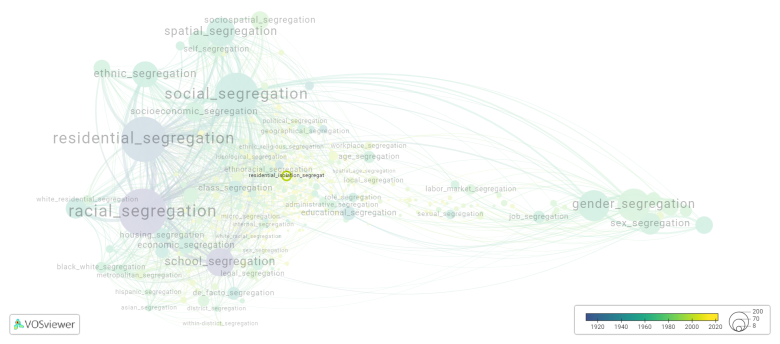Residential isolation segregation
Date and country of first publication[1]
2010
United States
Definition
Residential isolation segregation refers to the practice of segregating individuals or groups based on various factors, such as race, ethnicity, socioeconomic status, or disability, within residential areas or neighborhoods. This segregation often results in the creation of isolated and concentrated pockets of individuals who share similar characteristics.
Historically, residential isolation segregation has been used as a tool for systemic oppression and discrimination, primarily against marginalized communities. It has been commonly employed to enforce racial or ethnic segregation, perpetuating inequalities and limiting opportunities for individuals living in these isolated neighborhoods.
The impacts of residential isolation segregation are far-reaching and have significant detrimental effects on communities. It can lead to limited access to quality education, healthcare, employment opportunities, and other essential resources. The resulting socioeconomic disparities and lack of social integration can contribute to the perpetuation of cycles of poverty and systemic disadvantage.
Efforts have been made in many countries to address residential isolation segregation and promote more inclusive and diverse communities. This includes policies and programs aimed at fair housing practices, affordable housing initiatives, urban planning strategies, and promoting social integration to create more equitable neighborhoods.
The goal is to break down barriers and promote social and economic integration, creating opportunities for diverse communities to thrive. By creating inclusive residential areas, communities can foster social cohesion, increase opportunities for upward mobility, and ultimately work towards a more equitable society.
See also
Related segregation forms
Residential isolation segregation is frequently discussed in the literature with the following segregation forms:
residential segregation, social segregation

This visualization is based on the study The Multidisciplinary Landscape of Segregation Research.
For the complete network of interrelated segregation forms, please refer to:
References
Notes
- ↑ Date and country of first publication as informed by the Scopus database (December 2023).
At its current state, this definition has been generated by a Large Language Model (LLM) so far without review by an independent researcher or a member of the curating team of segregation experts that keep the Segregation Wiki online. While we strive for accuracy, we cannot guarantee its reliability, completeness and timeliness. Please use this content with caution and verify information as needed. Also, feel free to improve on the definition as you see fit, including the use of references and other informational resources. We value your input in enhancing the quality and accuracy of the definitions of segregation forms collectively offered in the Segregation Wiki ©.
Residential isolation segregation appears in the following literature
Kramer M.R., Cooper H.L., Drews-Botsch C.D., Waller L.A., Hogue C.R. (201). Metropolitan isolation segregation and Black White disparities in very preterm birth: A test of mediating pathways and variance explained. Social Science and Medicine, 71(12), 2108-2116. https://doi.org/10.1016/j.socscimed.2010.09.011
